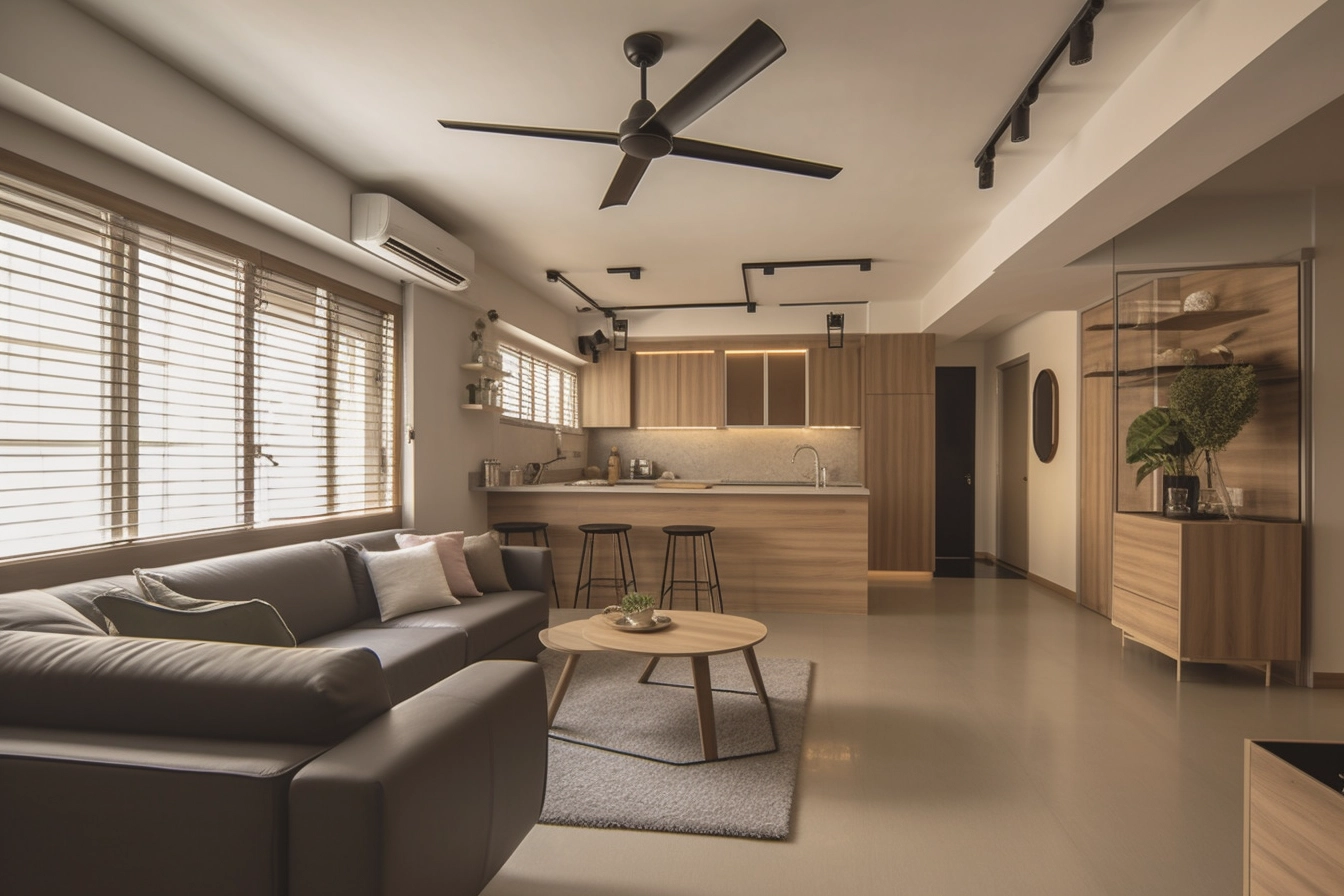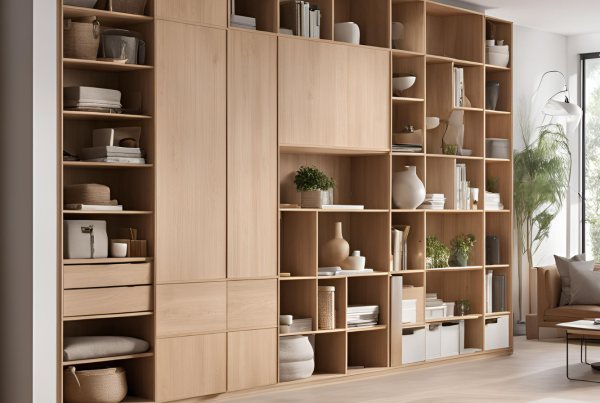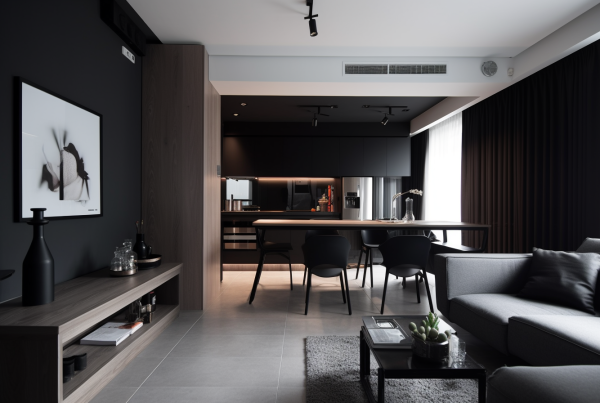In the ever-evolving landscape of interior design, the Japandi style has emerged as a captivating fusion where the serenity of Japanese aesthetics meets the functionality of Scandinavian minimalism. This harmonious blend creates spaces that are not only visually pleasing but also deeply comforting and elegant. In this essay, we delve into the world of Japandi, exploring its essential principles and offering practical tips to transform your living space into a sanctuary of tranquility and style.
What is Japandi Interior Design?
Japandi interior design is a fusion style that combines elements of Japanese and Scandinavian design philosophies. It marries the simplicity, minimalism, and functionality of Scandinavian design with the warmth, natural materials, and craftsmanship of Japanese design. The result is a harmonious blend of East and West, creating spaces that are serene, cozy, and elegant.
At the heart of Japandi lies the philosophy of Wabi-sabi, which celebrates the beauty of imperfection, impermanence, and authenticity. It encourages us to embrace the natural essence of materials, finding beauty in their flaws and patina. Incorporating Wabi-sabi into your home means opting for handcrafted ceramics, weathered wood, and textured fabrics that exude warmth and character.

Central to Japandi design is the concept of Warm Minimalism, which strikes a delicate balance between simplicity and coziness. This is achieved through a curated selection of furniture and decor that prioritizes clean lines, muted colors, and natural materials such as oak, bamboo, and linen. Layering soft textiles like wool throws and plush rugs adds a sense of comfort and invites relaxation.
Light and dark elements play a pivotal role in creating the quintessential Japandi ambiance. Balance is key, with an emphasis on maximizing natural light while incorporating darker accents for depth and contrast. Opt for sheer curtains that allow sunlight to filter through, complemented by matte black fixtures or dark-stained wood furniture to anchor the space and create visual interest.
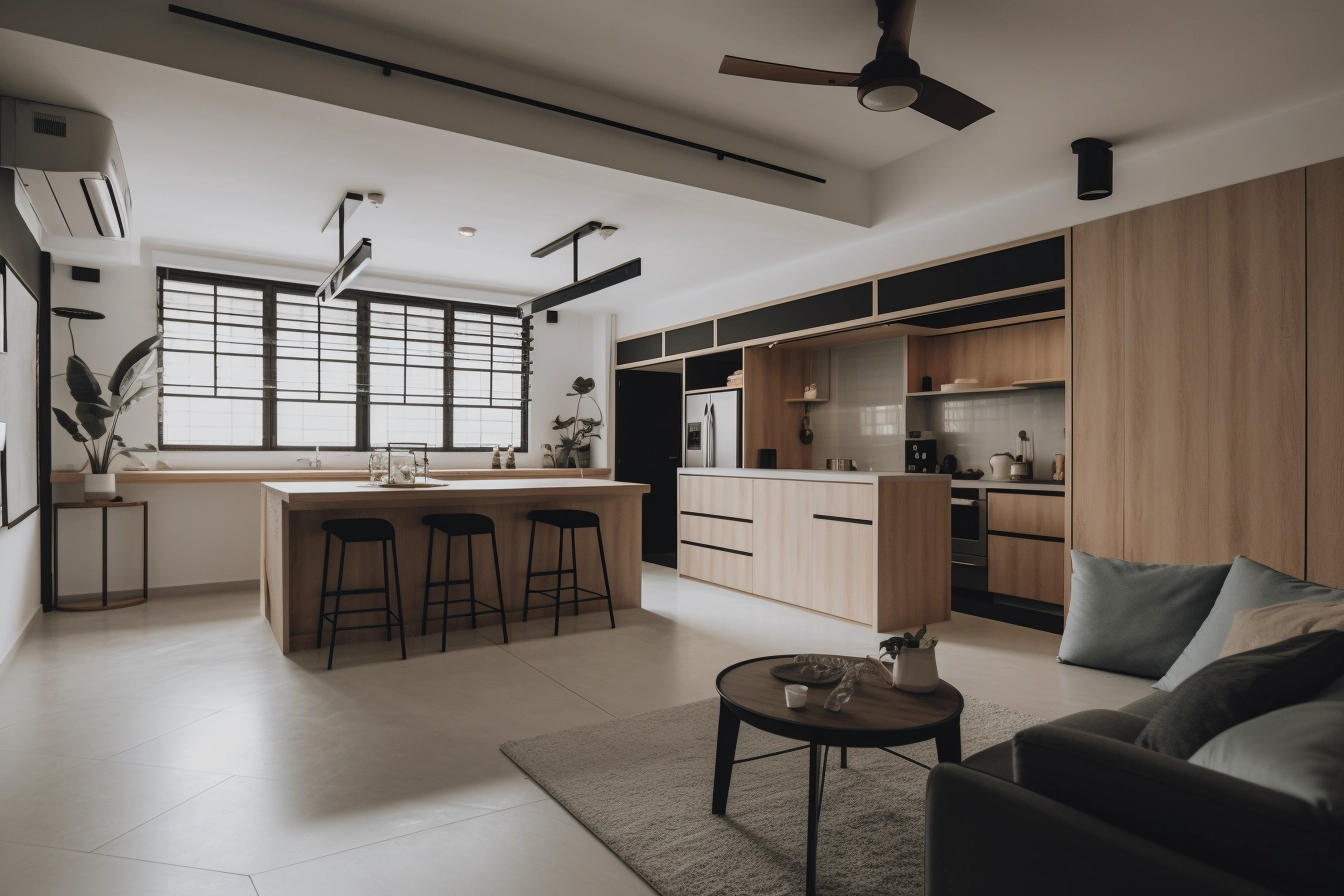
Texture also plays a crucial role in Japandi design, adding dimension and tactile appeal to interiors. Mix smooth surfaces like polished concrete floors or sleek countertops with rough-hewn textures such as raw stone or rattan. This juxtaposition creates a sensory experience that engages both sight and touch, enhancing the overall atmosphere of your space.
When it comes to color palette, Japandi embraces a restrained yet sophisticated approach. Soft neutrals like warm whites, soft grays, and earthy tones form the foundation, evoking a sense of serenity and tranquility. Accents of muted blues, greens, or terracotta can be introduced sparingly to add subtle pops of color without overwhelming the space.
In terms of furniture selection, Japandi favors pieces that are both functional and aesthetically pleasing. Look for clean-lined designs with minimal ornamentation, inspired by the timeless simplicity of Japanese and Scandinavian craftsmanship. Invest in quality pieces that prioritize comfort and durability, ensuring they will stand the test of time and evolve gracefully with your space.
To enhance the sense of harmony and balance in your home, incorporate elements of nature throughout your decor. Bring the outdoors in with potted plants, bonsai trees, or a simple arrangement of fresh flowers. Natural materials such as rattan baskets, stone sculptures, or woven bamboo accents further connect your space to the organic beauty of the natural world.
Finally, don’t be afraid to personalize your Japandi-inspired space with meaningful objects and artwork that reflect your unique personality and interests. Whether it’s a handmade ceramic vase, a vintage textile passed down through generations, or a gallery wall of black-and-white photographs, these personal touches add warmth and soul to your home, making it truly your own.
Hallmarks of a Japandi-Influenced Interior Design
A Japandi interior design home is characterized by a seamless fusion of nature and minimalism. It embodies clean lines and uncluttered spaces, drawing from both Scandinavian and Japanese aesthetics to create an atmosphere of calm and serenity. The neutral color palette, featuring earthy tones and muted colors like beige, white, and taupe, serves as a tranquil backdrop for the natural materials and textures that are central to the style. Wood, bamboo, rattan, and other natural fibers bring warmth and texture to the space, contributing to its overall sense of harmony.
Functionality is paramount in Japandi design, with every piece of furniture and decor serving a purpose and eliminating clutter. This emphasis on purposeful living not only promotes organization but also cultivates mindfulness in daily routines. Japandi also embraces the principles of wabi-sabi and hygge, celebrating imperfections and embracing coziness. This combination results in spaces that are both aesthetically pleasing and comfortable to inhabit.
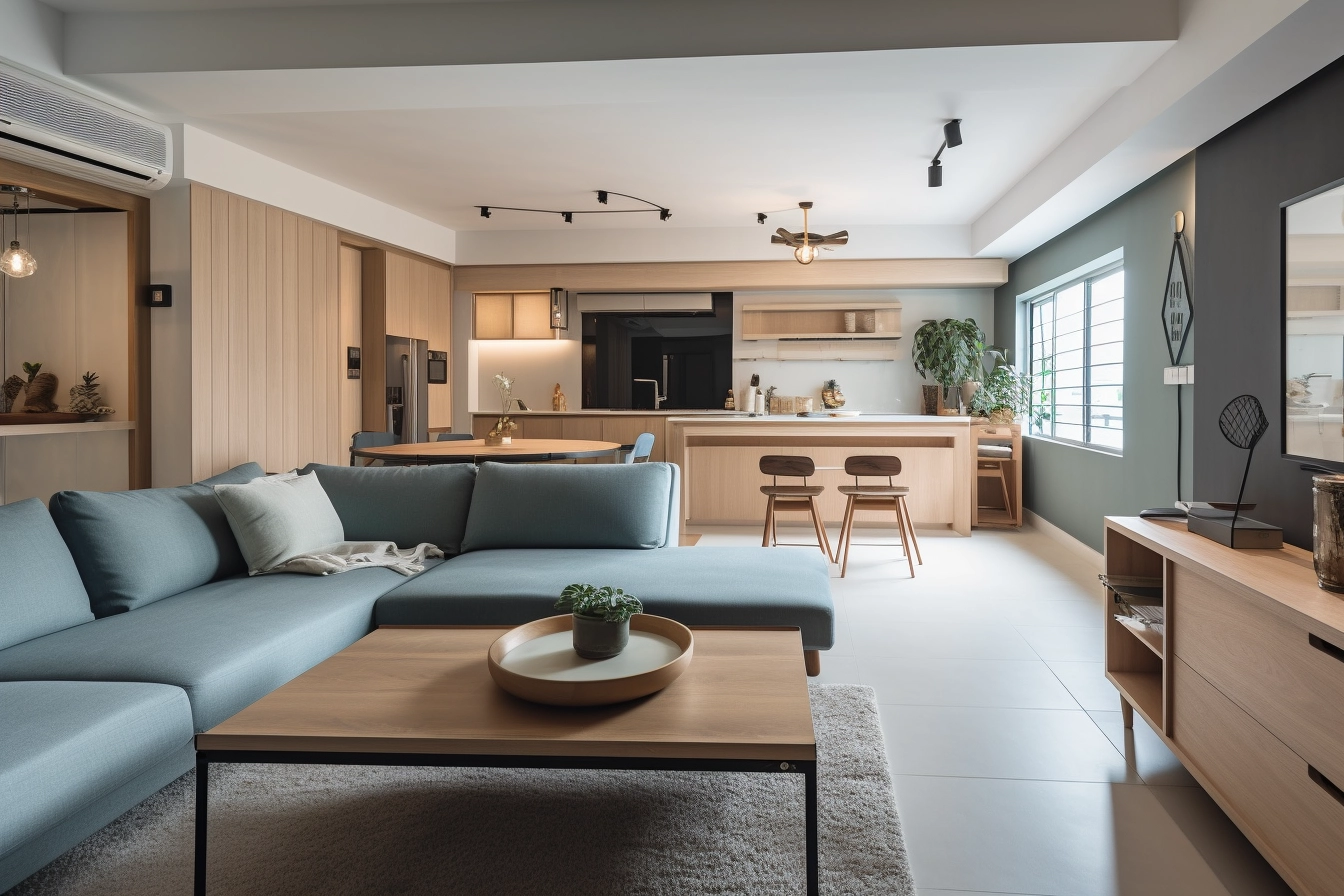
While minimalism dominates, Japandi allows for one or two carefully chosen statement pieces to add visual interest and personality to the space. These pieces should hold personal meaning or significance to the homeowner, adding a unique touch to the overall design. In essence, a Japandi interior design home is a harmonious blend of simplicity, functionality, and warmth, creating a sanctuary of style and tranquility.
Japandi Interior Design in Singapore
Japandi interior design has gained significant popularity in Singapore in recent years, driven by several factors. One key reason is its harmony with the local environment. Singapore’s tropical climate is well-suited to the neutral color palette and natural materials inherent in Japandi design. The use of wood and bamboo not only adds visual warmth but also helps create a sense of coolness and calmness in the hot weather. Moreover, with many Singaporeans residing in apartments with limited space, Japandi’s emphasis on functionality and space optimization aligns perfectly with the need to maximize smaller living areas.

Additionally, Japandi’s aesthetics resonate with current trends and societal values in Singapore. The country’s increasing focus on mental health and well-being has heightened the appeal of Japandi’s tranquil and minimalist atmosphere. The simplicity and serenity of Japandi design provide a welcome retreat from the hustle and bustle of urban life. Furthermore, its timeless and elegant appearance is particularly appealing to Singaporeans seeking a design aesthetic that won’t quickly go out of style. The clean lines and neutral colors characteristic of Japandi design offer a sophisticated yet understated elegance that suits a wide range of tastes and preferences.
Japandi offers a captivating blend of Eastern and Western design principles, creating spaces that are minimalist yet cozy, elegant yet inviting. By embracing the philosophy of Wabi-sabi, incorporating Warm Minimalism, balancing light and dark elements, and integrating texture, color, and nature, you can transform your living space into a sanctuary of style and serenity. So join us on this design journey and elevate your home with the timeless elegance of Japandi.
In essence, Japandi interior design embodies a balance of simplicity, functionality, and warmth, creating spaces that are both visually appealing and comfortable to inhabit. It offers a contemporary take on traditional design principles, resulting in interiors that feel timeless, elegant, and inviting.


